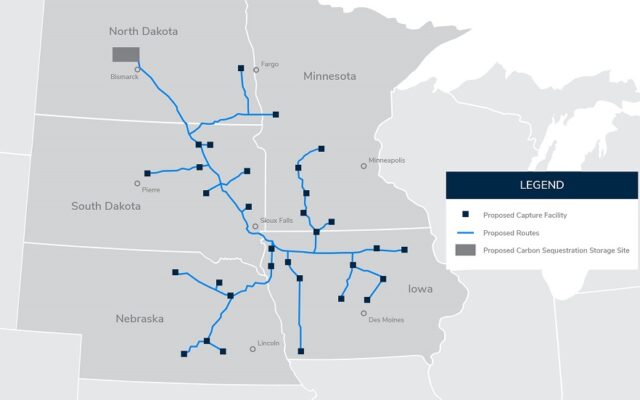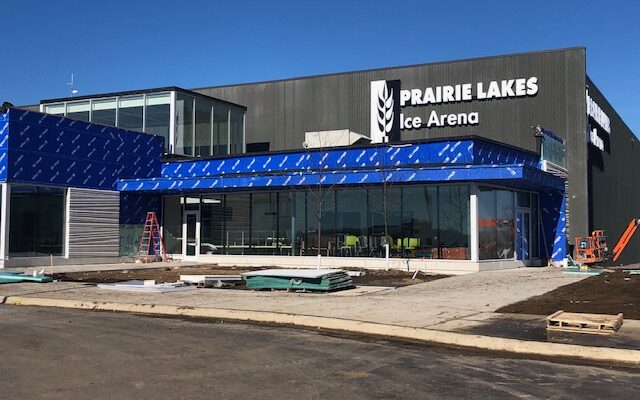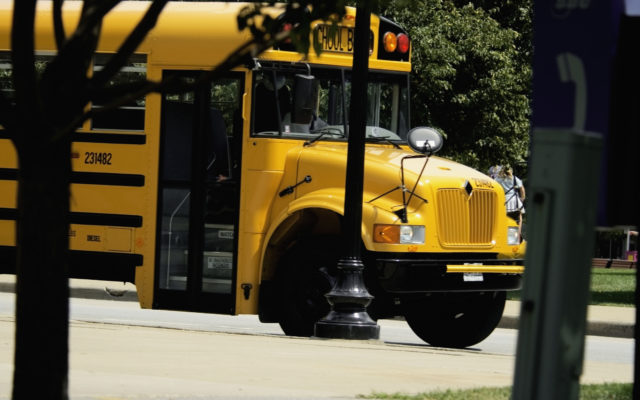Summit will make new CO2 pipeline permit application in South Dakota

October 4, 2023
Jared Strong
It could take more than a year for Summit Carbon Solutions to get approval for its proposed carbon dioxide pipeline in South Dakota.
That’s because the company, which was denied a pipeline permit by utility regulators in that state last month, will reapply after it identifies a new route that complies with county ordinances.
“Moving forward, we are committed to working with the counties in South Dakota to find a mutually agreeable path through each county,” said Sabrina Zenor, a spokesperson for the company. “This means working within ordinances regarding applicability of waivers, etc. and more dynamic conversations around routing.”
Summit applied for a permit to construct a carbon dioxide transmission pipeline in that state in February 2022. The South Dakota Public Utilities Commission denied the application about 19 months later in September, citing the route’s conflicts with ordinances in four counties.
Summit had asked the commission to overrule those ordinances but withdrew that request after the commission upheld the ordinances in regard to another pipeline proposal by Navigator CO2. That company has since suspended its negotiations for land easements in South Dakota and requested to suspend its permit process in Iowa.
Both companies have sought permission to build multistate pipeline systems to transport captured carbon dioxide from ethanol plants and other facilities. South Dakota is crucial for Summit’s proposal because it has eight of the 31 ethanol plants that would connect to Summit’s system and because it is a link between North Dakota and most of the remaining plants in Iowa, Minnesota and Nebraska. The company plans to sequester the greenhouse gas underground in North Dakota.
South Dakota law allows counties to adopt restrictions on the pipelines, but state regulators can overrule them if they are “unreasonably restrictive.”
The state has four counties — Brown, McPherson, Minnehaha and Spink — that have adopted ordinances that require the pipelines to be certain distances from residences, livestock facilities, nursing homes and other buildings. But they also have exceptions to those restrictions in some cases if county officials and landowners approve of them.
“We issue conditional use permits for lots of things that people don’t like,” said Scott Anderson, director of planning and zoning for Minnehaha County. “I don’t think it was the intent of the county commission to set up an ordinance to block anything. … It is a complicated situation with lots of people having strong emotions.”
Summit has begun discussions with Minnehaha and other counties to plot a new route. A company representative who spoke to county officials in Brown “basically said, ‘We’re starting at ground zero, we have to look at it like we don’t have a route,’” according to Scott Bader, planning and zoning director for Brown County.
Tracey Millar, zoning administrator for Spink County, said the company is seeking the county’s input on its route and has indicated it is moving the pipeline path farther away from people who oppose the project.
A Spink ordinance precludes the pipeline from being built within a half mile of a property line of a residence, but it can be built closer if the owner signs a waiver.
It’s unclear when Summit might reapply for a South Dakota permit.
“We plan to refile our application once we have a path through the state,” Zenor said.
State law requires the Public Utilities Commission to make a decision about permit requests within a year of the application. Summit’s first permit request took longer because the company sought a deadline extension for submitting its evidence and updating its application.




